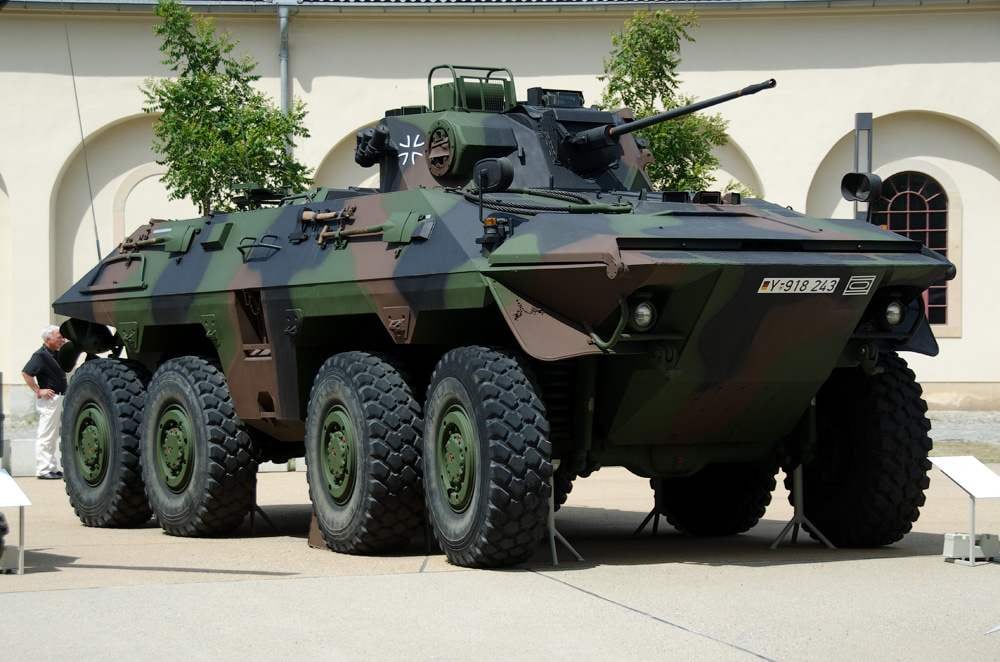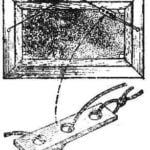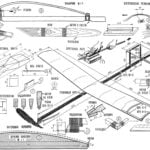 During the Second world war, Germany was the leader in the development of heavy armored vehicles with wheel formula 8×8. After a good armored car Sd.Kfz.231(8 Rad), which was a frame structure, followed by Sd.Kfz. 234/1 with a monocoque body (see “armor collection” № 1, 2007). For these machines and their modifications was characterized by the presence of all eight of the steered wheels and two control stations. Four-axle, or, as they are often called, vosmiklasnica armored vehicles have been successfully used by Hitler’s Wehrmacht in all theaters of war until the last days of the Second world war.
During the Second world war, Germany was the leader in the development of heavy armored vehicles with wheel formula 8×8. After a good armored car Sd.Kfz.231(8 Rad), which was a frame structure, followed by Sd.Kfz. 234/1 with a monocoque body (see “armor collection” № 1, 2007). For these machines and their modifications was characterized by the presence of all eight of the steered wheels and two control stations. Four-axle, or, as they are often called, vosmiklasnica armored vehicles have been successfully used by Hitler’s Wehrmacht in all theaters of war until the last days of the Second world war.
Within 10 years after the war because of the victorious powers of the policy of demilitarization of Germany, the military achievements of German designers were not requested. The situation changed after the establishment in 1956 of the Bundeswehr and the entry of Germany into NATO. In the first years of its existence, the new German army received the armored vehicles of foreign manufacture, mostly American. Soon, however, in Germany, started creating their own samples, the benefit of the powerful economic potential of the country allows it. After main battle tank “Leopard” and the fighting machine of infantry Marder came the turn and wheeled armored car aimed to solve intelligence problems.
In 1960 the Ministry of defence of Germany gave firms engaged in the production of military equipment, tactical and technical requirements for combat reconnaissance vehicle (BRM). The most important of them were: high speed, allowing the machine to move forward quickly and just as quickly get out of enemy fire (BRM had to have the same speed as when driving forward and in reverse); good cross off-road and the ability to overcome afloat in the water hazard; sufficient maneuverability on land and afloat; low noise level; long range; the ability to operate in different climatic conditions with temperature range from -40 to +50°C; the possibility of exploration with open and closed hatches (visually and with the aid of instruments) at any time of day and year. Of the main economic demands were relatively low production cost, easy maintenance and repair.
It is not surprising that, having considered these demands, the West German firms have come to the conclusion that, to the greatest extent they respond BRM four-axle with leading and steering wheels. Six leading firms of Germany decided to participate in the development of a new armored vehicles. Five of them — “Bussing”, “klöckner-Humboldt-either onsite”, “Friedrich Krupp”, “MAN and Reinstall-Henschel” — formed a United design Bureau. Company “Daimler-Benz” has decided to create a machine, relying only on their own strength. Design began in 1965. In 1968 in the test center of the Bundeswehr in Trier began field testing the first two prototypes of BRM. Along with the representatives of companies-developers participated in them and military specialists of the army.
Comprehensive testing lasted more than three years and by February 1972, the total mileage of all cars was about 200 thousand. km during the tests the company conducted revision of individual components, assemblies and systems, and sometimes replaced them with more sophisticated ones. For example, both pneumatic and hydraulic brakes replaced the hydraulic, began to use the same transmission and tires dimension 14.00—20. The last against lateral sliding showed the best results compared with previously used tires 16.00—20. In 1970 the prototypes were tested in extreme climatic conditions: from January to March in Norway, and in August in Sardinia. In the process of testing firms to competitors was made nine prototypes, the design of which made various changes and improvements. In particular, we tried several types of power plants and transmissions.
According to the results of comparative tests, preference was given to the car company “Daimler-Benz” but mass production of their offspring, she did. As in the years of the Second world war, Germany was broad cooperation of the manufacturers of military equipment. In December 1973 the Ministry of defence of Germany has signed a contract with the contractor — firm “Reinstall Wehrtechnik” for the supply of 408 vehicles, the designation SpaPz-2 Luchs (“Lohse” — lynx). They were supposed to enter service with the reconnaissance battalions of the 11 divisions of the Bundeswehr. The first production armored vehicle “Lohse” left the Assembly shop of the plant in Kassel in may 1975, and September 4 was held the solemn ceremony of transfer to the representatives of the Bundeswehr.
BRM “Lohse” has a welded hull, thickness, location and form armor plates which provide protection from fire small-caliber guns, small arms and shell splinters and mines. the Office main driver is placed in the bow of the hull. The crew compartment includes the middle part of the hull and tower. Here are the jobs of commander (left) and gunner. In the rear of the hull in front of the radiator and a fan compartment of the radio operator, who simultaneously second driver (BRM when moving in reverse). For planting crew designed individual hatches in the roof of the hull and turret, and close the door hole in the left side of the hull. Drivers seat, steering wheel actuators and control mechanisms are mounted on lifting devices and can be fixed at the top (when driving with open hatch) or lower positions.

BRM “Lohse” heads the column of military equipment on the teachings of the Bundeswehr

BRM “Lohse” in intelligence
The main armament of the BRM — 20-mm automatic gun “Rheinmetall” .Rh 202 Mk 20 DM5. It is installed in the rotating welded tower “Rheinmetall” TS7, having the shape of a truncated cone, in a special airtight compartment between the seats the commander and gunner. The elevation of the gun from -15° to +69°, which can fire at air targets. In the tower there are also two ammo boxes, ammunition feed mechanism and a box for collecting spent cartridges.
To determine the target range and shooting a gun in the possession of the commander and the gunner has a periscopic sight WM-8025 with built-in optical rangefinder PERI-Z11A1. At night they can be replaced by active infrared night vision device and observation device with electro-optical image intensification. In this case, the area is illuminated with IR spotlight placed on the left side of the tower. Rate gun at about 1000 RDS./min. Ammunition — 375 rounds of ammunition in two types: high-explosive incendiary and armor-piercing-tracer, with the effective range of fire on lightly armored targets 600 — 800m.
On the roof of the tower above the commander’s hatch, mounted 7.62-mm machine gun MG3 (angles of attack vertical from -15° to +55°). When firing at air targets used rifle scope with rings lead to speeds of movement of the target 100 and 250 m/s. Ammunition gun — 2000 rounds.
On the left and right walls of the tower there are four grenade launchers for smoke-screens. To ensure all-round visibility with closed hatches has 12 prismatic blocks, seven of them from the commander, and the other is the gunner (right sight).
The tower is equipped with electro-hydraulic mechanisms for horizontal and vertical aiming of the gun, as well as for primary loading. Provided guidance and hand cannon as a commander, and a gunner, and, if it carries out the commander, gunner drives are automatically switched off. Stabilizer aiming gun is missing.
To perform intelligence functions BRM “Lohse” equipped with a navigation system FNA 4-15, consisting of several blocks and the on-Board computer that provides continuous positioning of the machine.
The engine compartment is located in the middle of the hull between the crew compartment and the operator compartment and are insulated from them by air-tight walls. It mounted 10-cylinder V-shaped multi-fuel liquid-cooled engine “Daimler-Benz” OM 403 VA with turbocharger that develops when working on diesel power 390 HP at 2500 rpm When operating on petrol engine power is equal to 360 HP at the same rpm.
The engine is a single power block with a four-speed transmission with torque Converter (torque Converter) with a choice of manual or automatic control; generator, starter, oil radiators and a filter and compensation tank of a cooling system, Vozduhoflotsky with cyclone dust collector and other elements.
Spa The Pz 2 Luchs:
1 — 20-mm gun; 2 — illuminator; 3 — smoke grenade; 4 — ring for mounting a machine gun; 5 — door for crew boarding; 6 — antenna; 7 — tube dust emissions from HLF and water from the bilge pump crew compartment; 8 — cover filler right fuel tank; 9 — a cover of the hatch of the gunner; 10 — air intake for the engine and HLF; 11 — louver cooling fan; 12 — cover a second driver (radio operator); 13 — cover cap-oil tank; 14 — a cover of the hatch of the commander; 15 — cover filler left fuel tank; 16 — a cover of the hatch of the main driver; 17 — balneotreatment shield; 18 — propeller
All piping, cables and driveline equipped with quick couplings, and connectors of all liquid piping provide automatic overlap when outside the units. The presence of such connectors and the consolidation of several units into a single power unit allows you to quickly, without draining the coolant and oil, remove it from the car for replacement or repair in the field, and conduct bench testing of the dismantled power plant, including a trial run of the engine.
Engine BRM “Lohse” not only provides the optimal temperature of the power plant when the machine is afloat and in severe off-road conditions, but also creates very little noise when operating that meets one of the requirements of the reconnaissance car. Reducing the noise in BRM also contribute to the good insulation of the engine compartment, the presence of silencers, air intake and exhaust a large volume.
In order to hinder detection machine heat appliances, exhaust pipe bred in the aft compartment, where the temperature of exhaust gases from the muffler additionally decreases mixing with the air, chased by a fan.
Moving BRM “Lohse” can be heard only at a distance of 50 m.
Torque from the transmission is transmitted to the locking transfer case, located on the sealing gaskets in the hatch of the bottom so that its shaft is inside the machine, and transfer case shafts on the outside under the bottom. This is achieved thanks to the water resistance and sealing of the machine housing.
Wheel suspension — spring springs with progressive characteristic. All suspension components supplied with hydraulic shock absorbers double action.
The front pair of axles as well as rear, are connected by balancers, distributing and leveling the load between the wheels at different speed, which ensures sufficient adhesion of the wheels with the ground even when overcoming machine ditches and trenches.
BRM “Lohse” can be controlled by any of the two drivers by order of the commander, which, by moving a lever, passes (when machine speed not exceeding 6 km/h) control function the main or second driver (the operator). If the machine speed does not exceed 50 km/h, it can be managed all four pairs of wheels. The minimum turning radius is 5.75 m. Then dramatically increases the maneuverability on soft ground because the machine in this mode of movement constitutes only two tracks. At higher speeds the car becomes unstable, and to prevent it from tipping over special automatic device disconnects the drive control going to the two rear pairs of wheels, and managed to be the only two front-facing pair. In this case, the turning radius increases to 9.5 m.

SpäPz-2.
The construction of the transmission and the presence of two control stations allow the car to move with the same speed both forward and backward.
The movement and management of BRM afloat is provided by two four-bladed propellers, placed in niches in the rear of the hull and having an independent, separate from the wheels of the gimbal. To change the direction of movement of the machine the commander presses one of the buttons (right or left), then turn on the electro-hydraulic actuator for synchronous rotation with worm gear housings of the propeller in the appropriate direction. BRM for movement in the opposite direction the screws are rotated 180°. The speed of the movement afloat is also specified by the commander by a swinging lever, by moving which he gives the driver the command to install the necessary rpm of the main engine. To exclude salivatory the upper front hull plates retaining the bow wave and the subsequent increase in the drag car on the nose on the top sheet of the bow part of the hull is balneotreatment shield with hydraulic drive.
To protect the crew from weapons of mass destruction BRM “Lohse” has the filtration plant, centrifugal fan which has two modes of operation, feeding in the car 1.5 m3 or 3 m3 of air per minute, thus creating an overpressure.
BRM “Lohse” was in mass production from 1975 to 1978.
For the Bundeswehr this machine is to this day.
According to both foreign and local experts, she fully meets the requirements of this class of combat vehicles. The main disadvantage of the system is not powerful enough even at the time of the creation of weapons, whose effectiveness is further reduced by the lack of stabilization. Already in the 1970-ies it was considered necessary to arm BRM guns of larger caliber, up to malaymuslim 90 – or 105-mm guns that would allow the machine of this type not be completely defenseless when a sudden meeting with a potential enemy tanks.
Alternatively thought possible and upgrading BRM launcher for launching anti-tank guided missiles (ATGM). However, neither the West German experts was not carried out. Upgrading BRM “Lohse” has mainly affected the monitoring devices and electronics. In particular, in 1982 — 1987 all “Lohse” was equipped with passive night vision devices — thermal imagers. This allowed to abandon the use of the IR illuminator backlight, unmasking the car at night.
BRM “Lohse” is in service only in the Bundeswehr. For export this car is never delivered and in the fighting also never participated.
In the German contingent reconnaissance vehicle “Lohse” participate in UN peacekeeping operations and NATO on the territory of the former Yugoslavia.
TACTICAL AND TECHNICAL CHARACTERISTICS OF BRM “LOHSE”
Combat weight, t…………………….19,5
Overall dimensions, mm:
length……………………………………7740
width…………………………………2980
height………………………………….2840
clearance………………………………..440
Track, mm…………………………….2540
Maximum speed
movement, km/h:
land………………………………..90
afloat………………………………10
Cruising on the highway, km……….800
Overcoming obstacles:
the angle of elevation, deg……………….30
wall height, m…………………..0,8
the width of the ditch, m………………………1,9



